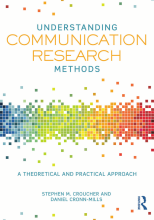Research Design - Data - Data Sampling
3 important questions on Research Design - Data - Data Sampling
What is a sample and why do you take a sample when conducting research?
We take samples because collecting and analysing all available evidence when conducting research is not always possible (e.g. Surveying every adult in England). Adults in England= population; the group of cases from which you want to collect data.
What are generalizations and for which researchers is this important?
The purpose of sampling is to create an objective sample that best represents the population, so that one can make generalizations about the population from the sample.
What are the 4 types of nonrandom sampling procedures? And when do you use nonrandom sampling?
2. Snowball sampling
3. Purposive sampling
4. Quota sampling
You can use nonrandom sampling for a number of reasons
The question on the page originate from the summary of the following study material:
- A unique study and practice tool
- Never study anything twice again
- Get the grades you hope for
- 100% sure, 100% understanding































